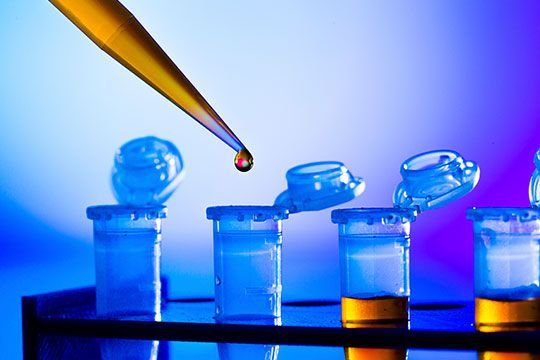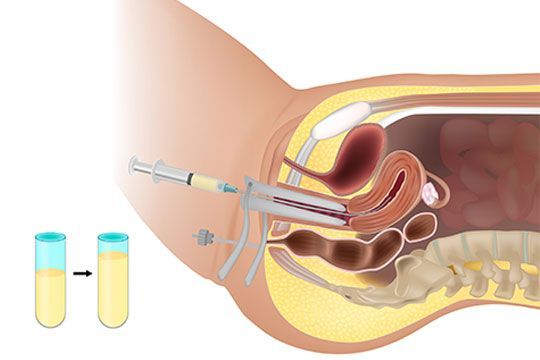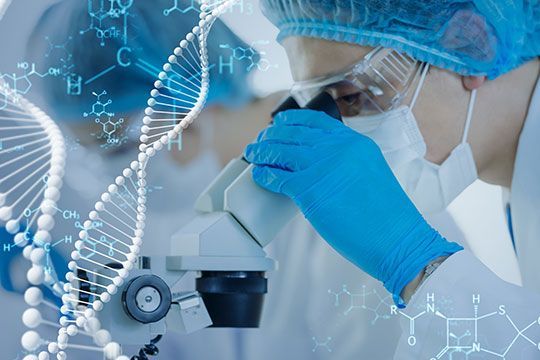Specialist doctors
in Fertility
in Hermosillo, Sonora
We have different fertility treatments through the use of top-level technologies.
Fertility is the ability to conceive a child. Although in most cases it occurs naturally and successfully, there are situations in which, for different reasons, it cannot be completed, which is why Fertility Doctors are used who can provide considerable support as appropriate. the case.
If you are currently struggling with infertility and need help achieving a successful pregnancy, you should know that there are different treatments that considerably increase your chances of having a baby.
There are low and high complexity treatments, which differ in the method used to perform fertility procedures. In highly complex ones, specialized technology plays a very important role in obtaining successful results.
Scheduled coitus
It is also known as directed intercourse. This reproduction technique consists of optimizing, monitoring and controlling a woman's ovulation to match it with sexual relations. In this way, the time of greatest fertility is better used to increase the chances of conception.
-
How does it work?
When the ovulation process occurs in women, that is, when the mature egg is expelled from the ovary into the fallopian tubes, the survival capacity of the egg is 24 hours. This type has to be used by the sperm to reach it and fertilize it.
-
What is the process?
A control of the menstrual cycle is generated through clinical analyzes and ultrasounds to schedule the time of intercourse and, later, perform a pregnancy test to know the results.
-
What are the side effects?
It is a very simple technique where no major side effects have been found. Even the hormonal medication that the woman receives does not have significant side effects that impede the development of the procedure.
-
How long does the treatment last?
On average, this procedure lasts between 10 and 12 days, depending on the person to whom it is applied.
How does In Vitro Fertilization work?
What is the procedure?
In this process, the egg and sperm join together outside the body, using laboratory equipment to enable a woman to become pregnant. It is applied when patients have failed other less expensive fertilization techniques.
In Vitro Fertilization is carried out in five steps:
Stimulation or superovulation. Fertility medications are administered, which increases the woman's egg production. Using transvaginal ultrasounds, the ovaries are examined and blood tests are performed to check hormone levels.
Removal of the egg. Through a minor surgery called follicular aspiration, the eggs are removed from the woman's body. The woman may experience mild cramping after this procedure. Sometimes a pelvic laparoscopy will be performed to remove the eggs. If the woman does not produce eggs, donated eggs can be used.
Insemination and fertilization. The man's sperm is placed together with better quality eggs from the woman and mixed to achieve insemination. The eggs and sperm are stored in a controlled chamber and that is where the sperm fertilizes the egg. If the doctor thinks the chance of fertilization is low, the sperm can be injected directly into the egg, called intracytoplasmic sperm injection (ICSI).
Embryo culture. After the fertilized egg divides, it is monitored in the laboratory to monitor its proper growth. Additionally, the cells of each embryo are analyzed to determine the risks of transmitting a genetic disorder.
Embryo transfer. The embryos are placed inside the woman's uterus 3 to 5 days after the removal and fertilization of the egg. The procedure is done in the doctor's office while the woman is awake. The doctor inserts a thin tube (catheter) containing the embryos into the vagina through the cervix and into the uterus. If an embryo sticks (implants) into the lining of the uterus and grows there, pregnancy occurs.
What are the side effects?
How long does the treatment last?
There are different symptoms such as mild abdominal pain and distension, nausea, vomiting and diarrhea that last approximately a week. These symptoms may last longer if the woman achieves pregnancy.
Once the second or third day of menstruation begins, the stimulation process begins for the patient. Appointments would be every 3 to 5 days, all in a period of 10 to 12 days, (subject to doctor's indication).
Subsequently, the puncture, or extraction of oocytes, is performed and a few days later the transfer, (if the doctor indicates otherwise)
The treatment lasts a total of 14 to 16 days.
In Vitro Fertilization
In Vitro Fertilization is a fertility treatment that requires hormonal stimulation to obtain eggs, which, once fertilized in the laboratory, will be implanted in the uterus to achieve pregnancy. With this procedure, quality embryos are obtained with which to increase the chances of achieving pregnancy.

How does In Vitro Fertilization with donation (IVF with Ovodon) work?
In this process, the egg and sperm join together outside the body, using laboratory equipment to enable a woman to become pregnant. It is applied when patients have failed other less expensive fertilization techniques. The important difference with traditional In Vitro Fertilization is that eggs from an anonymous donor are used for this procedure. This happens when the patient has poor quality eggs or has some ovarian deficiency.
What is the procedure?
This procedure is exactly the same as traditional In Vitro Fertilization, with the difference that ovarian stimulation and egg retrieval are performed on the donor.
In Vitro Fertilization with donation (IVF with Ovodon)
In Vitro Fertilization with donor eggs (also called IVF with Ovodon) is an assisted reproduction treatment in which an anonymous donor voluntarily gives up her oocytes to achieve insemination. Donated eggs are fertilized with sperm selected from the donor's partner.
What are the side effects?
Since ovarian stimulation and egg retrieval have not been performed on the patient, there are no side effects unless pregnancy is achieved. These effects may include mild abdominal pain and distension, nausea, vomiting, and diarrhea.
How long does the treatment last?
The treatment lasts a total of 14 to 16 days.
PACKAGE FOR IN VITRO FERTILIZATION (IVF) ovum CONDONATION (IVF OVODON)
- First assessment consultation with a certified specialist, free/virtual. Bank eggsMedical fees. (certified anesthesiologist is included only for the puncture) Implantation procedure (FIRST TRANSFER) Consultations during treatment First year of embryo freezing (which has a cost of $5,000.00 MXN, subject to changes) Personalized advisor who will take care of all the logistics for your intervention. Necessary transportation arising from and for your treatment. Reservation and use of operating room surgical equipment, complete equipment, supplies and healing during your hospitalization. Stay in recovery room, monitored. PCR test (Not included). It must be sent 72 hours before the procedure, it must be no more than 3 days. Personalized follow-up after the procedure.
Intrauterine insemination
This assisted reproduction procedure involves placing sperm directly into the uterus while the patient is ovulating, which helps the sperm get closer to the egg. This reduces the time and distance that the sperm must travel, thus facilitating the fertilization of the egg.
How does it work?
Sperm are placed directly into the uterus. The sperm are washed and concentrated to be deposited on a specific date in which the ovary releases one or more eggs to fertilize (ovulation).

What is the procedure?
First, the man provides a semen sample in the office or it can also be thawed from a donor or sperm bank to prepare it. Since only the sperm are needed for this procedure, they are washed and substances that could affect the procedure are discarded.
An ovulation control treatment is applied to women so that specialists know the most accurate time when ovulation will occur.
Finally, and after one or two days of detecting ovulation, the sperm are deposited in the uterus. You will be provided with subsequent follow-up to know the results of the procedure.
What are the side effects?
You may experience fatigue, heaviness, pain in the abdominal and lumbar area, slight bleeding, swollen abdomen and breasts and/or a sensation of stinging in the ovaries and uterus.
How long does the treatment last?
The consultation for intrauterine insemination lasts approximately 20 minutes and the procedure itself can take only two minutes.

Preimplantation genetic diagnosis
Also known as DGP or PGT (for its acronym in English), it is a prevention technique that is used in Assisted Reproduction procedures to detect anomalies in the genetic material of embryos. It is primarily used to choose the best embryo to transfer in an in vitro fertilization treatment.
-
How does it work?
A detailed study of the DNA of the eggs or embryos is carried out in a specialized laboratory. Through this analysis, anomalies or serious diseases caused by genetic and chromosomal alterations are detected in the embryos before their implantation in the cervix.
-
What is the procedure?
It takes place on the third or fifth day of embryonic development carried out in the laboratory. A biopsy of the blastomeres or trophoblast is performed on the embryo, which are components that contain the genetic information that will be used to make the diagnosis.
-
What are the side effects?
Upon finding a high incidence of the patient having altered and chromosomally abnormal embryos, it is decided to cancel their transfer, which can cause different emotional and psychological situations in the patient due to the interruption of their assisted fertility treatment.
-
How long does the treatment last?
Between 2 and 4 weeks
PACKAGE FOR IN VITRO FERTILIZATION (IVF)
- First assessment consultation with a certified specialist, free/virtual. Medical fees. (certified anesthesiologist is included only for the puncture) Stimulation medications (injections only) Consultations during treatment Egg retrieval and embryo transfer First year of embryo freezing (which has a cost of $5,000.00 MXN, subject to change) Personalized advisor who will be in charge of all the logistics for your intervention. Necessary transportation arising from and for your treatment. Reservation and use of operating room surgical equipment, complete equipment, supplies and healing during your hospitalization. Stay in recovery room, monitored. PCR test (No included). It must be sent 72 hours before the procedure, it must be no more than 3 days. Personalized follow-up after the procedure.
USO OF COOKIES AND WEB BEACONS
Medical Trip informs you that our website uses its own or third-party cookies and/or web beacons to improve your experience on the site, storing your preferences and personalizing content and advertising. To disable the operation of cookies and other website data, as well as to learn about the processing of your data and information, visit our
NOTICE OF PRIVACY
Engage ---



